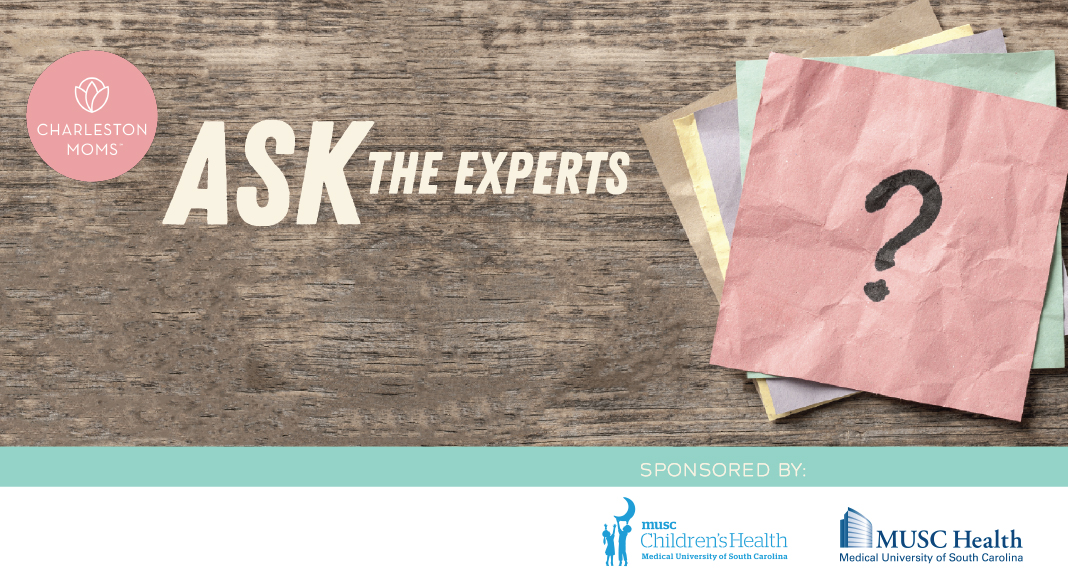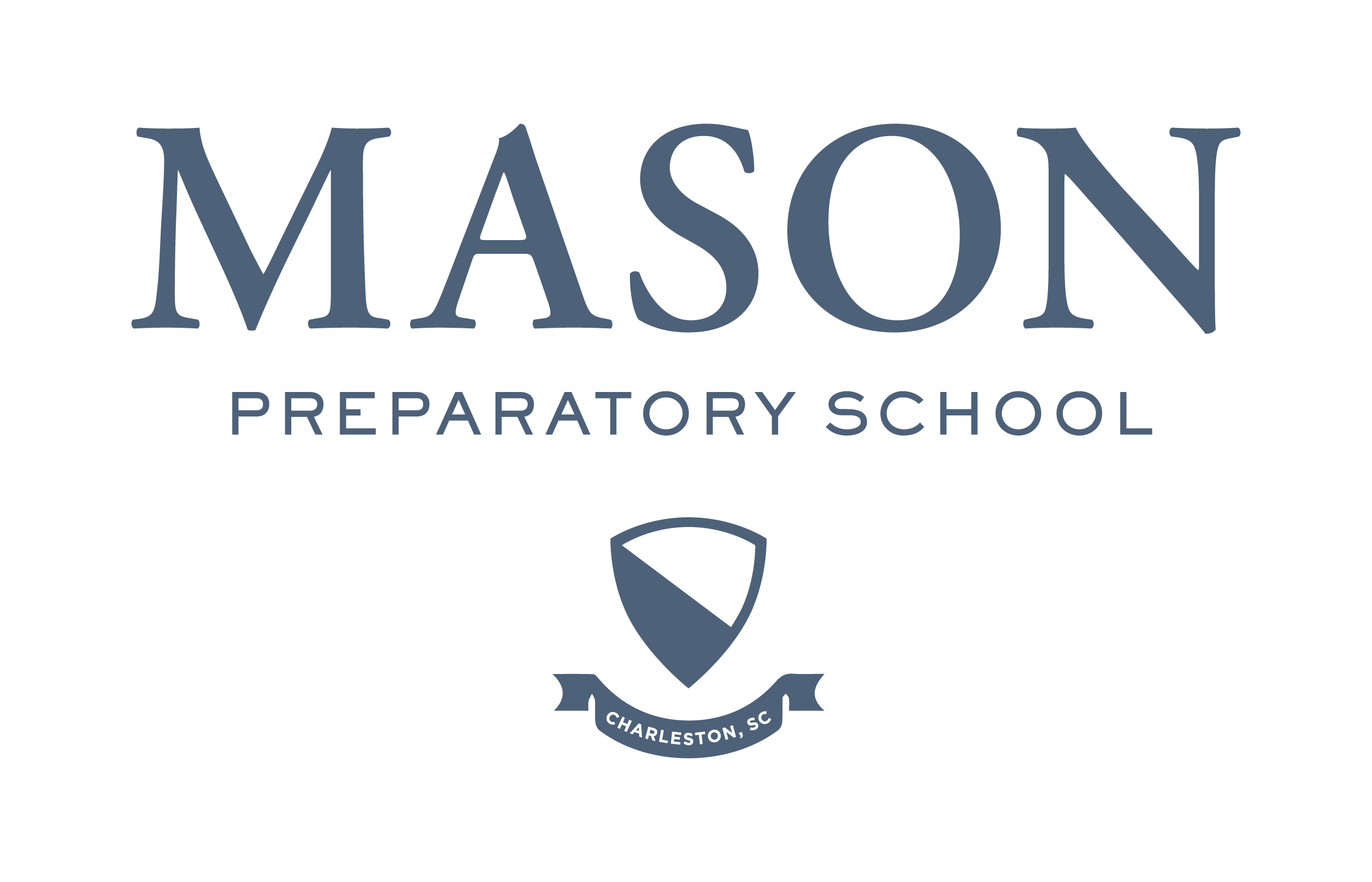One thing we all have in common as parents are questions. Lots of questions. Whether it’s concerning how to save for your child’s college fund, best practices for dental care, or how to talk to your child about a death in the family, it can feel overwhelming at times. While Google is handy, it can also be confusing and most importantly, unreliable.
We are so excited to introduce a new feature on Charleston Moms called Ask the Experts where a team of local experts will answer your burning parenting questions in a monthly blog post. Our hope is that you get answers to some common questions that many parents have and connect with these amazing resources right here in our community!
Want to learn more about our team of local experts? Have a question? Ask it here and it will be answered in next month’s post!
*This is a sponsored post, presented by our valued local partners. While we love sharing these resources with our readers, we have not personally vetted each individual business represented here and encourage our readers to do their own research to find the best fit for their family.

Children's Health
Q: My toddler has pretty severe reactions from stings (mosquitoes, biting bugs, etc). What are the best methods to help relieve the itching and swelling?
A: Many of us are spending more time outside than ever and sometimes the critters leave their mark! Mosquitoes, chiggers, fleas, and bedbugs often cause itchy red bumps, due to the body’s reaction to the insect’s saliva.
Horsefly, deer fly, and gnat bites often cause bumps that can be painful. Fire ant bites often cause itchy blisters or pimples. In response to bug or insect bites or stings, rarely some children will develop an infection of the skin or the lymph channels, and these children should visit the pediatrician.
What are the signs of a dangerous reaction to bug bites or stings?
A life-threatening reaction is called anaphylaxis, and children who are having this issue will often have difficulty breathing shortly after the sting or bite. While most children will have minor reactions to these critters,
these anaphylactic reactions most commonly occur with bee, yellow jacket, wasp, or fire ant stings. Call 911 if this type of reaction occurs. If your child has a history of anaphylaxis and has been prescribed an epinephrine auto-injector for these stings, this should be administered immediately.
Expert(s):
Elizabeth Mack, MD, MS
Division chief of pediatric critical care
MUSC Children’s Health

Women's Health
Q. I’m expecting my first baby and want to know how I’ll know if I’m really in labor?
A: Although many women can tell when labor begins, sometimes it can be difficult. Labor is the result of regular uterine contractions that cause the cervix to dilate. If you are having contractions and your cervix isn’t dilating, then this is commonly called false labor.
There are certain changes that you can look for that may signal labor is beginning. When the baby’s head begins to settle into your pelvis, you may feel as if you are “lighter”, thus the name of lightening for this process. You may have this sensation weeks, days, or hours before labor begins.
For some women, passing their mucus plug can happen before labor. This is the result of your cervix dilating and releasing the thick mucus plug that forms in the cervical canal. When the mucus plug begins to pass, you will notice an increase in vaginal discharge. In some pregnancies, the amniotic sac or membranes will rupture prior to the onset of labor. This may feel like a large gush of fluid or a constant trickle of fluid from your vagina. It is important that you call your provider if you have this sensation.
The most common symptom of labor is that of contractions. Uterine contractions can feel like menstrual cramps and can be felt in your back, abdomen, or pelvis. Labor is associated with regular, painful uterine contractions. When you are in labor, your uterus will contract in a regular interval and will relax between contractions. You should not have pain between contractions. Contractions that improve with hydration or rest are typically false contractions however if you are concerned, please contact your healthcare provider.
When you are awaiting labor, you should call your healthcare provider if you notice a decrease in your baby’s movements, vaginal bleeding, membrane rupture, or severe pain with no improvement between contractions. Please remember, labor is a process, and with your first baby, it is very common to have a “false alarm” before labor!
Expert(s):
Barbara Head, MD
OB-GYN Maternal-Fetal Medicine
MUSC

Oral Health
Q: Any tips for flossing well while wearing braces?
A: Flossing with braces can be tough, but it’s OHHHH so important. Here is a list of helpful tools for getting in between those teeth with all those brackets and wires:
1. SuperFloss- a GREAT option. This floss has a hard plastic end that can be easily guided under the wire AND a fuzzy middle that works like toothbrush bristles to remove plaque.
2. Floss Threaders- These look like large sewing needles. You thread your regular floss through the “eye” of the threader and then use the threader to guide the floss under the wire.
3. Platypus Flossers- These are a crowd favorite. Similar to regular plastic flossers, these are specifically designed to work with braces. One end is curved so it slides under the wire. NO THREADING REQUIRED! I love these for car rides to school/camp.
4. WaterPik/Airflosser- A nice option to power wash teeth with water or air. They direct water or air at high volume between your teeth. They definitely remove plaque, but they can be messy… at least with my kids;)
5. Proxy Brushes “Christmas Tree Brushes”- These aren’t technically flossers, but the triangular shape fits under the wire and cleans right where the teeth meet each other. This “interproximal” area is a HARD place to clean with regular toothbrushes and is often missed by floss as well. Proxy brushes are perfect for this and a nice option to keep for on-the-go cleaning. When I had braces, I kept them in my purse for a quick after-meal clean.
Cleaning with braces may be a bit tedious, but remember it’s only a small inconvenience for a lifetime of beautiful, healthy smiles!
Expert(s):
Dr. Katie Bullwinkel
Board Certified Orthodontist
Bullwinkle Orthodontics

Financial
Q: We are a young family without a lot of assets or financial savvy. We know we need to plan for our future, but don’t know where to start. Do we have to have money to be seen by a financial professional?
A: Kudos to you for wanting to start planning for the future! I know it can be overwhelming thinking about where to even begin. Many people tend to think that they need to wait to meet with a financial professional until they get their debt under control or have more money.
That’s simply not true.
What ends up happening is they keep putting it off and putting it off and never meet with anyone. In the financial world, time is money. The sooner you begin saving and investing, the sooner you start making money and earning compound interest. Albert Einstein himself said, “compound interest is the 8th wonder of the world.”
The first step is to meet with a financial services professional. They can help you identify your goals and put together a plan. While there are some advisors that require you to have a certain amount of assets before they work with you, most advisors such as ourselves work with young families to help you develop your assets.
The second step is to come up with a plan. You have to start somewhere. If you are young and don’t have a lot of assets that’s where we can help. Depending on your goal, you might need to set up an investment account. Financial professionals can help you figure out where to save your money efficiently.
Different accounts are taxed in different ways and a professional can help you maximize your savings. Typically, the earlier you meet with a financial services professional, the better. Getting on track as a young family can provide you more stability and security for your future.
Expert(s):
Caroline Mahoney, Financial Services Professional
Steven Fazio, Financial Services Professional
Riley Knudsen, Financial Services Professional
New York Life, Charleston

Education
Q: Any tips on how parents can prepare their children for the coming school year with all of the health concerns currently?
A. Although decisions are yet to be made about exactly what the upcoming school year will look like, getting your child used to some of the guidelines and restrictions that may be in place when students return to school will make them feel more comfortable in their “new” environment. Some things you can do and practice over the summer include:
• Wearing a mask. We know that wearing a mask can take some getting used to, so consider having your child wear one for a bit each day.
• Washing hands. Practice washing hands for at least 20 seconds with your child.
• Not touching their faces. This can be challenging, especially for children, but it is so important. Make a game of it at home and see if you can “catch” each other touching your faces. Whoever gets caught the least wins for the day!
• Cleaning. Enlist your child’s help to clean and sanitize around the house. Schools will need to sanitize throughout the day, and this is something your child can learn about and help with at home.
• Social distancing. Show your child what 6 feet looks like and practice staying apart if you are outside of your home (standing in line, walking down the street, etc.) If they can recognize what a safe distance looks and feels like, they will be more prepared to move around school safely when the time comes.
• Have a conversation. Go through a typical day with your child, identifying parts of their day that may need to change to keep students safely distanced (i.e., recess, lunch, and how their desks are situated in the classroom).
• As decisions are made by your child’s school, you can add to this list. For example, will your child’s temperature be taken each day? You can practice at home (with a real or pretend thermometer) to get them used to it.
Most importantly, reinforce with your child that whatever happens with school, things will be OK. Let them know that any changes at school are being made for their safety and the safety of their friends and teachers.
Expert(s):
Joanne Stemple
Director of Communications
Mason Prep School

Oral Health
Q: My child has his first cavity and I’m wondering how to prepare him for getting a filling.
A: As a parent, it is best to be positive and encouraging to the child prior to the appointment and to leave most of the treatment explanation up to the dental team. Always make sure to use words that convey a comfortable and caring environment and avoid words that could scare the child.
The more relaxed a patient is going into the procedure, the more comfortable they will be for the filling appointment. For example, if we need to numb a tooth for the filling we use the word sleepy juice instead of “shot..” We explain that we are going to clean the tooth and paint on the tooth, but avoid words like “drill” and “cavity” as those words will often cause unnecessary fear. It is also important for the parent to be calm and positive about the appointment as kids pick up on their parent’s mindset about the appointment.
Expert(s):
Dr. Mike & Dr. Will
Board Certified Pediatric Dentists
Kids Teeth

Newborn Care & Postpartum Support
Q: Any tips for night weaning? I believe my 10 month old really just wakes for comfort once/night, but we end up nursing back to sleep. It’s not a huge interruption, but I’d love to sleep an entire night.
A: You have enjoyed this journey with your little one. The nighttime wakings have given you the opportunity to have that one on one time with your baby, to snuggle and feed. But now you’re ready for your baby to sleep all night long. Here are some tips to help wean the nighttime feedings.
1. Evaluate your baby’s daytime caloric intake. Your little one has a certain amount of calories that they need and a 24 hour time period. Increasing your babies feeding amount during the day, whether they are breastfeeding or bottle-feeding, can help ensure that the nighttime waking is not related to hunger.
2. Help your baby fall asleep independently. If they fall asleep in your arms and wake three hours later in a different space, it can be very disruptive because this space feels unfamiliar. Babies that fall asleep on their own are quicker to settle themselves back to sleep.
3. Make sure that the sleep environment helps support a great night of sleep. The ideal sleep environment: baby sleeps in their crib, loud white noise, dark room with minimal stimulation, and room temperature 68-72 degrees. By creating the ideal sleep environment, it will be much easier for your baby to connect their sleep cycles instead of waking.
4. Consider that your baby may not be waking to feed. Many babies are very active in their sleep. They may open their eyes, roll around, sit up, babble, or even fuss for a bit. Pause and give your baby a little bit of time to re-position, readjust, or get comfortable again. See if they will drift back off to sleep without your intervention. Many times the intervention will actually wake them more and cause difficulty in falling back asleep without feeding.
5. Send your partner in to soothe. Once your little one smells the milk, they will want to feed. By sending your partner in to help soothe your baby back to sleep, this will eliminate the smell of milk which will decrease the stimulation of those hunger cues.
If you are still struggling with weaning the nighttime feeding email [email protected] ! I would love to help support you in your motherhood journey.
Experts(s):
Liz Price
RN
Nurse at Night














